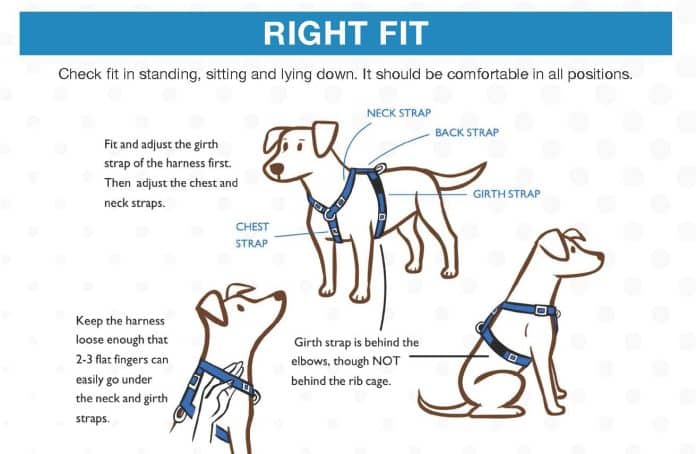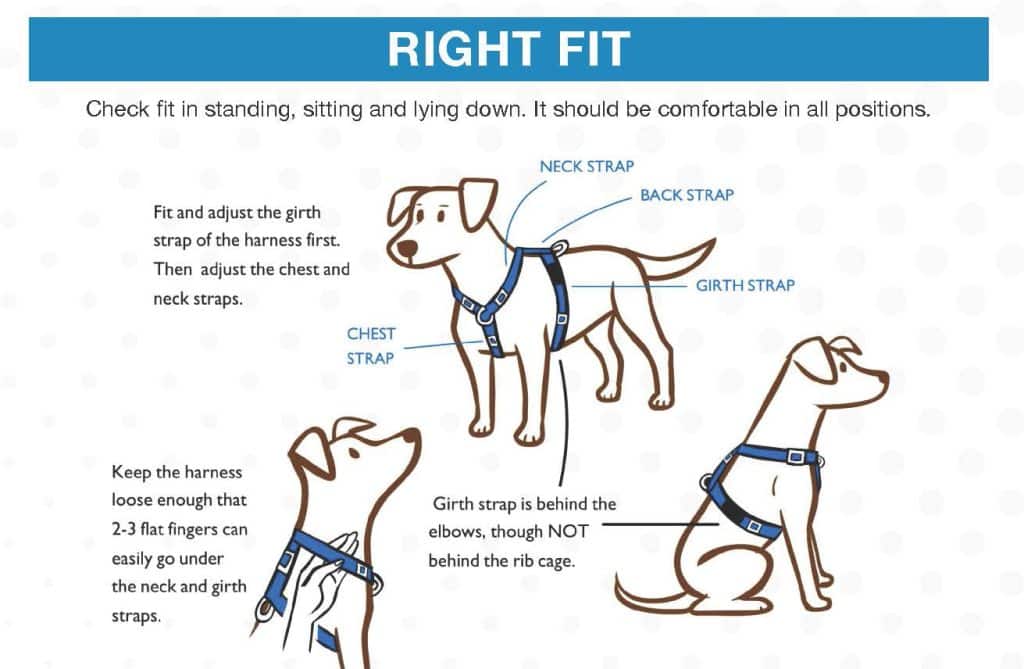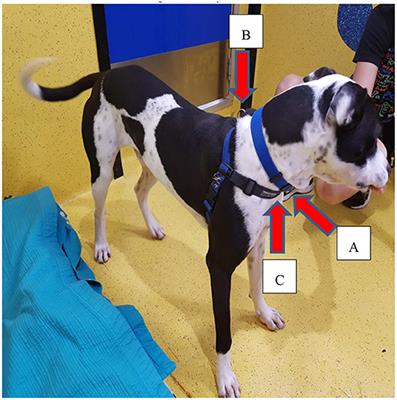In dog harnesses, knowing what pitfalls to avoid when choosing the perfect fit for your furry friend is crucial. From discomfort to safety concerns, there are several factors to consider.
In this article, we’ll explore owners’ common mistakes when selecting a dog harness and provide the essential tips to ensure your pup stays comfortable and secure during walks and adventures.
So, before you make your next purchase, let’s uncover what to avoid in a dog harness.
This image is the property of images.squarespace-cdn.com.
Poor Quality Materials
Choosing low-quality materials can lead to discomfort or injuries for your dog
When choosing a dog harness, one of the most important factors to consider is the materials’ quality. Poor quality materials can not only make the harness uncomfortable for your furry friend, but they can also pose a risk of injury. Harnesses made from cheap, thin, or weak materials may not withstand the daily wear and tear of walks and playtime, leading to premature damage or breakage. This could result in your dog escaping or getting tangled up during walks, compromising their safety.
Avoid harnesses made from cheap, thin, or weak materials
To prevent any discomfort or potential injury for your dog, avoiding harnesses made from low-quality materials is crucial. Look for harnesses constructed with durable and robust materials like nylon or leather. These materials are known for their durability, resistance to stretching, and ability to withstand the rigors of daily use. They provide a secure and reliable option for walking and restraining your dog, ensuring their safety and comfort.
Incorrect Size or Fit
Using the wrong size or fit can cause discomfort and hinder proper movement.
Another common mistake to avoid when choosing a dog harness is selecting the incorrect size or fit. Like humans, dogs come in various shapes and sizes, and a harness that does not fit properly can cause discomfort and hinder their movement. A harness that is too tight can restrict their breathing, cause chafing or rubbing against their skin, and limit their range of motion. On the other hand, a too-loose harness may not provide the necessary support and control, making it easier for your dog to slip out.
Measure your dog’s chest size to ensure a proper fit.
To ensure a proper fit for your dog, it is essential to measure their chest size. Use a soft measuring tape and wrap it around the widest part of their chest, just behind their front legs. Take note of the measurement and refer to the sizing guide provided by the harness manufacturer. Each brand may have slightly different sizing parameters, so it’s essential to consult the specific guidelines for the harness you are considering.
Avoid harnesses that are too tight or too loose
Avoid guessing your dog’s size or assuming they fit into a standard size range. Harnesses that are too tight or loose can cause discomfort and potentially lead to injuries. If your dog falls between sizes, opt for the larger size and look for harnesses with adjustable straps that allow a more customized fit.
No Adjustable Straps
The lack of adjustable straps can make it difficult to achieve a secure and snug fit
When choosing a dog harness, it is crucial to consider whether it offers adjustable straps. Harnesses without adjustable straps can make achieving a secure and snug fit challenging, increasing the chances of discomfort, rubbing, or even your dog slipping out of the harness. Without the ability to adjust the straps, you may be limited to a one-size-fits-all approach, which does not consider the varying shapes and sizes of dog breeds.
Look for harnesses with adjustable straps to customize the fit to your dog’s body
Look for dog harnesses that feature adjustable straps to ensure optimal comfort and security. These allow you to customize the fit according to your dog’s unique body shape and size. Adjustable straps also provide the flexibility to accommodate any fluctuations in weight, such as weight gain or loss due to age or health-related factors. Adjusting the straps ensures that the harness fits snugly without being too tight or overly loose, enhancing your dog’s comfort and safety.
Avoid harnesses with fixed straps that cannot be adjusted
Avoid harnesses with fixed straps that cannot be adjusted. While they may appear convenient, they do not allow for a customized fit, compromising your dog’s comfort and potentially leading to discomfort or escape.
Complicated Buckles or Clips
Harnesses with complicated buckles or clips can be frustrating and time-consuming to put on and take off
Ease of use is an important consideration when choosing a dog harness. Harnesses with complicated buckles or clips can be frustrating and time-consuming to put on and take off, making getting ready for walks or outings more cumbersome than necessary. This can be particularly challenging if you have a wiggly or impatient dog who may become restless or resistant during the harnessing process.
Choose harnesses with easy-to-use buckles or clips for convenience
Choose options that feature easy-to-use buckles or clips to simplify the process of putting on and taking off the harness. Quick-release buckles or snap-on clips are convenient designs that allow for a smooth and efficient harnessing experience. These buckles or clips can be easily fastened or undone with one hand, reducing the time and effort required to secure your dog’s harness.
Avoid harnesses with multiple or difficult-to-operate fasteners
Avoid harnesses with multiple or difficult-to-operate fasteners, especially if you prefer a quick and hassle-free harnessing experience. Complicated buckles or clips can not only cause frustration but may also lead to potential accidents or injuries if not properly secured.
This image is the property of www.frontiersin.org.
Rubbing or Chafing
Certain harness designs or materials can cause rubbing or chafing on your dog’s skin
Comfort is of utmost importance when selecting a dog harness, and specific designs or materials can cause rubbing or chafing on your dog’s skin. This can result in discomfort, irritation, and even painful sores. Harnesses poorly designed or constructed with abrasive materials increase the risk of rubbing or chafing, compromising your dog’s well-being and enjoyment during walks and other activities.
Select harnesses with padded or soft materials to prevent irritation
To avoid any rubbing or chafing, it is advisable to select harnesses with padded or soft materials. These provide an extra cushioning layer between the harness and your dog’s skin, reducing the potential for irritation or discomfort. Padded harnesses are particularly beneficial for dogs with sensitive skin or short fur, as they help distribute the pressure evenly and minimize friction.
Avoid harnesses with rough edges or abrasive materials
Avoid harnesses with rough edges or abrasive materials that can cause discomfort or irritation. Take the time to inspect the construction of the harness and ensure that all seams, edges, and contact points are smooth, rounded, and free of any potential sharpness. By selecting a harness with careful attention to the materials and design, you can ensure your dog’s comfort and prevent any rubbing or chafing.
No Reflective Elements
Harnesses without reflective elements can make it difficult to see your dog in low-light conditions
Safety should always be a top priority when choosing a dog harness, especially if you walk your dog during low-light conditions, such as at dawn, dusk, or nighttime. Harnesses without reflective elements can make it challenging for drivers, cyclists, or pedestrians to spot your dog, increasing the risk of accidents or collisions. This is particularly important if you walk your dog near roadways or areas with limited visibility.
Choose harnesses with reflective strips or materials for increased visibility
Choose harnesses that feature reflective strips or materials to enhance your dog’s visibility and ensure their safety during walks in low-light conditions. Reflective elements reflect light, making your dog more visible to others, even in dimly lit or dark environments. Look for harnesses with strategically placed reflective strips or panels visible from multiple angles, increasing the chances of your dog being seen and avoiding any potential accidents.
Avoid harnesses that lack reflective features, especially if you walk your dog at night
Avoid harnesses that lack reflective features, especially if you frequently walk your dog at night or in areas with limited visibility. Providing your dog with added visibility through reflective elements can significantly reduce the risk of accidents and enhance their safety during nighttime walks.
This image is the property of 2houndsdesign.com.
Overly Restrictive Designs
Some harness designs can overly restrict your dog’s movement and natural gait
While a harness is primarily meant to keep your dog secure and under control, it is essential to ensure that it does not overly restrict their movement or hinder their natural gait. Overly restrictive harness designs can be uncomfortable for your dog and may impede their ability to walk, run, or play freely.
Select harnesses that allow for comfortable and unrestricted movement
To provide your dog with a comfortable and unrestricted walking experience, selecting harnesses designed to accommodate their natural movement and gait is crucial. Look for harnesses with a secure fit around the chest and shoulders while allowing enough room for your dog’s front legs to move freely. A well-fitting harness should sit snugly without causing any discomfort or restrictive pressure points.
Avoid harnesses with excessive padding or tight configurations that limit mobility
Avoid harnesses with excessive padding or tight configurations that limit your dog’s mobility. While padding can provide additional comfort, too much can restrict movement and cause discomfort. Similarly, overly tight configurations may restrict your dog’s natural gait, hindering their enjoyment and well-being during walks.
Poorly Designed Leash Attachment Point
A weak or poorly positioned leash attachment point can compromise control and safety
The leash attachment point on a dog harness is critical in maintaining control and ensuring your dog’s safety during walks. A weak or poorly positioned attachment point can compromise your ability to guide your dog effectively. It may even make the leash detached, potentially leading to a dangerous situation.
Ensure the leash attachment point is secure and located at the back or chest for optimal control
When choosing a dog harness, ensure the leash attachment point is secure and positioned correctly for optimal control and safety. The attachment point should be sturdy and well-reinforced to handle your dog’s pulling force or sudden movements. Additionally, it is recommended to choose harnesses with leash attachment points located either at the back or the chest. These positions offer better control and distribute any pulling force more evenly, reducing the risk of strain or injury.
Avoid harnesses with flimsy or easily detached leash attachments
Avoid harnesses with flimsy or easily detached leash attachments that can compromise control and risk your dog’s safety. Scrutinize the leash attachment point and ensure it is robust and securely fastened to the harness. This will provide peace of mind and allow you to guide your furry friend during walks or outings confidently.
This image is the property of i.insider.com.
Difficult to Clean
Harnesses that are challenging to clean can accumulate dirt, odors, and bacteria
Regular cleaning is essential to maintain cleanliness and hygiene for both you and your dog. However, some dog harnesses can be challenging to clean, accumulating dirt, odors, and bacteria. Harnesses that cannot be easily cleaned may harbor potential health hazards, compromising your dog’s well-being and increasing the risk of skin irritations or infections.
Choose harnesses that are machine washable or easy to wipe clean
To ensure ease of maintenance and cleanliness, choose dog harnesses that are machine washable or easy to wipe clean. Machine washable harnesses can be thrown into the washing machine, eliminating labor-intensive handwashing. Additionally, harnesses made with materials that can be easily wiped clean with a damp cloth or sponge are also a practical choice, allowing you to remove any dirt or grime that may accumulate quickly.
Avoid harnesses with intricate designs or delicate materials that require specialized cleaning
Avoid harnesses with intricate designs or delicate materials that require specialized cleaning. These harnesses may require extra time, effort, or professional cleaning to maintain hygiene properly. Opt for harnesses with simple designs and materials that can withstand regular washing or wiping, ensuring a clean and safe harness for your dog.
Inadequate Support for Pullers
For dogs that pull, harnesses with insufficient support can strain their neck and back
If you have a dog that tends to pull during walks, choosing a harness designed to provide support and reduce the strain on their neck and back is crucial. Pulling can exert considerable force on your dog’s body, potentially leading to discomfort, injuries, or long-term health issues if not properly supported.
Look for harnesses specifically designed for dogs that pull, with added padding and support
When selecting a harness for a dog with pulling tendencies, looking for options designed to provide adequate support is essential. Harnesses labeled as “no-pull” or “anti-pull” often come with added padding, support straps, or front attachment points. The additional padding and support work together to distribute the pulling force more evenly across your dog’s body, reducing the strain on their neck and back.
Avoid harnesses that lack proper support for dogs with pulling tendencies
Avoid choosing harnesses that lack proper support for dogs with pulling tendencies. Pulling can lead to discomfort and potential injuries without the necessary support, compromising your dog’s overall well-being and enjoyment during walks. Opt for harnesses that prioritize support and distribute the pulling force effectively, helping alleviate strain or discomfort on your dog’s neck and back.
By considering these factors and avoiding the pitfalls mentioned above, you can ensure that you choose a dog harness that provides optimal comfort, safety, and functionality for your furry companion. Remember to prioritize quality materials, proper fit, ease of use, comfort, visibility, mobility, leash attachment points, maintenance, and support for pullers. You and your four-legged friend can have many enjoyable and safe adventures with a well-selected harness.
This image is the property of 2houndsdesign.com.













































